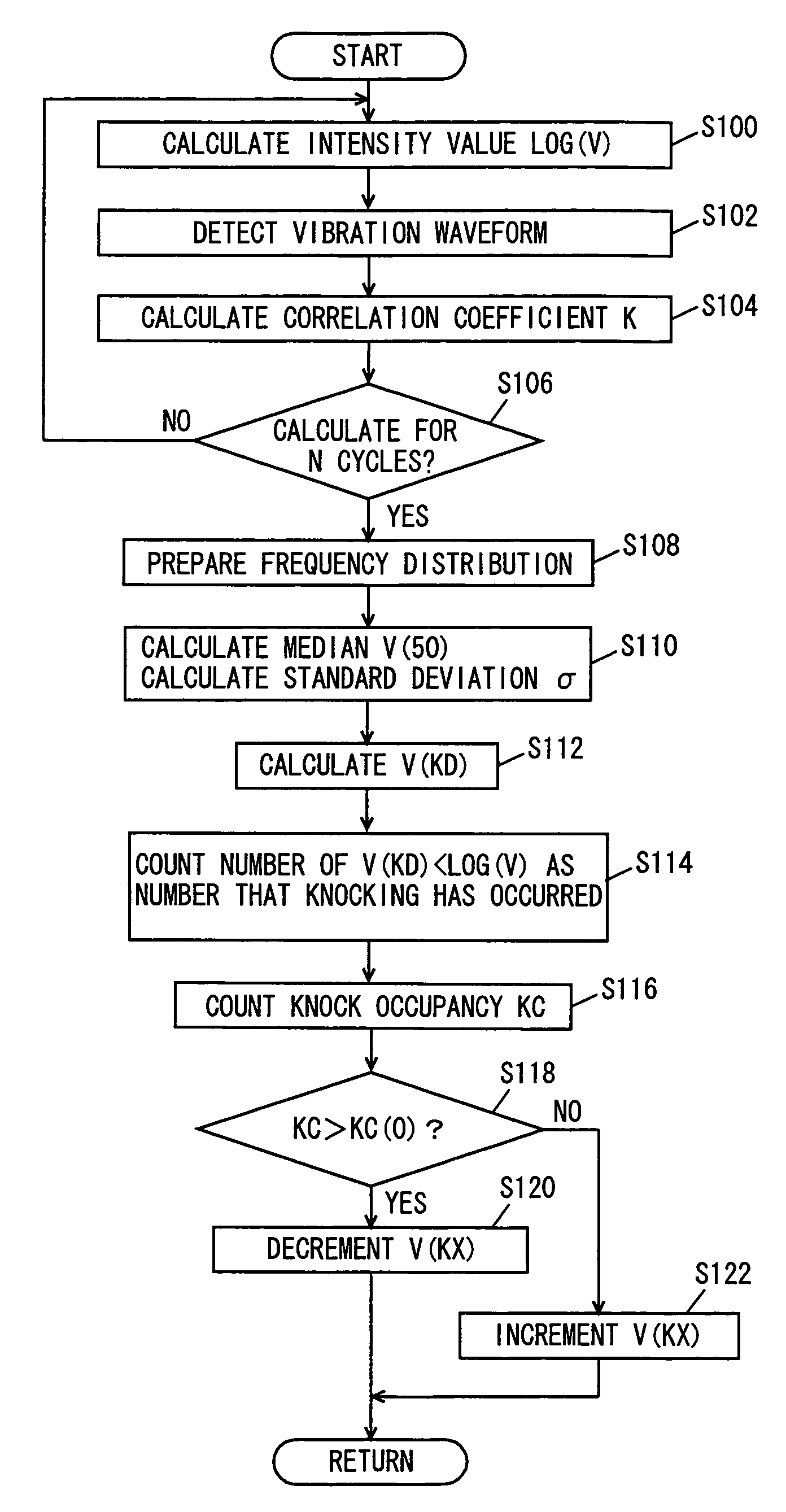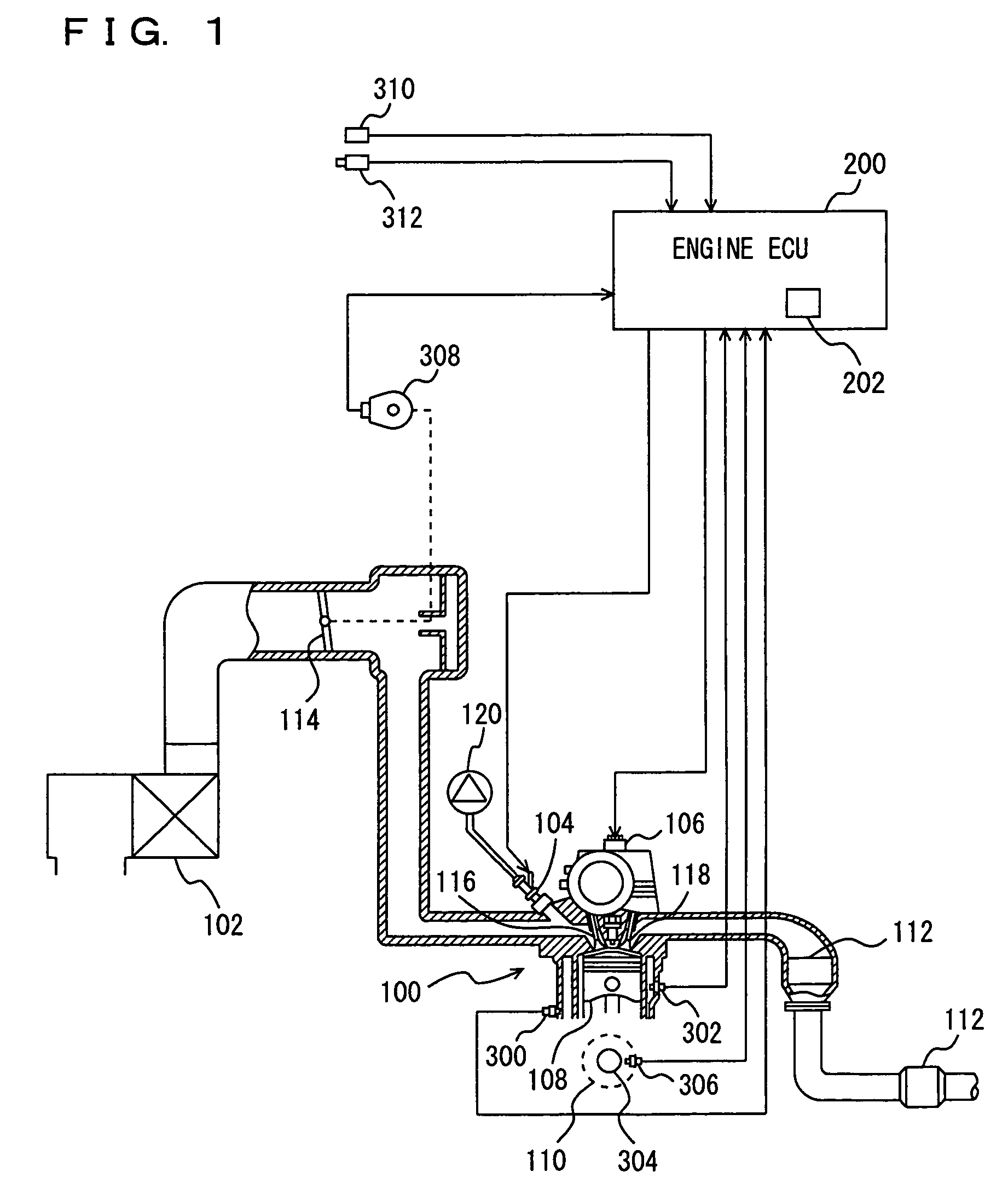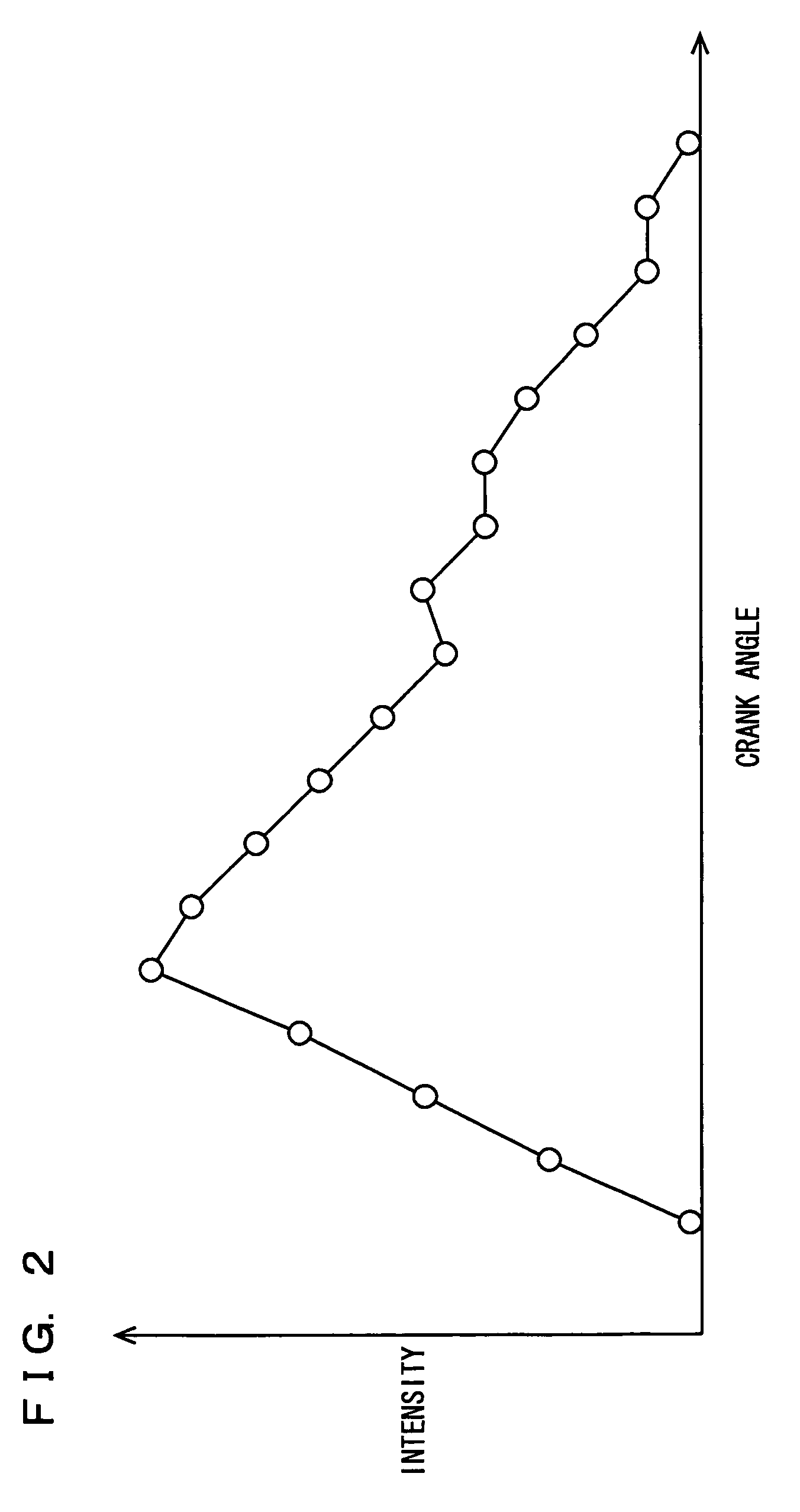Ignition timing control device of internal combustion engine
a technology of ignition timing and control device, which is applied in the direction of machines/engines, instruments, analogue processes for specific applications, etc., can solve the problems that the retardation or advancing of ignition timing may not be performed appropriately
- Summary
- Abstract
- Description
- Claims
- Application Information
AI Technical Summary
Benefits of technology
Problems solved by technology
Method used
Image
Examples
Embodiment Construction
[0040]Hereinafter, an embodiment of the present invention will be described with reference to the drawings. In the description below, same components are denoted by same reference numerals. Their names and functions are same. Therefore, detailed description thereof will not be repeated.
[0041]Referring to FIG. 1, an engine 100 of a vehicle mounting an ignition timing control device of an internal combustion engine according to an embodiment of the present invention will be described. The ignition timing control device of the internal combustion engine according to the present embodiment is realized by a program executed by an engine ECU (Electronic Control Unit) 200 for example.
[0042]Engine 100 is an internal combustion engine which ignites an air taken from an air cleaner 102 and an air-fuel mixture injected from an injector 104 with an ignition plug 106 in a combustion chamber and burns them. Injector 104 may be one which injects fuel into an intake manifold, or one which directly ...
PUM
| Property | Measurement | Unit |
|---|---|---|
| crank angle | aaaaa | aaaaa |
| frequency distribution | aaaaa | aaaaa |
| combustion pressure | aaaaa | aaaaa |
Abstract
Description
Claims
Application Information
 Login to View More
Login to View More - R&D
- Intellectual Property
- Life Sciences
- Materials
- Tech Scout
- Unparalleled Data Quality
- Higher Quality Content
- 60% Fewer Hallucinations
Browse by: Latest US Patents, China's latest patents, Technical Efficacy Thesaurus, Application Domain, Technology Topic, Popular Technical Reports.
© 2025 PatSnap. All rights reserved.Legal|Privacy policy|Modern Slavery Act Transparency Statement|Sitemap|About US| Contact US: help@patsnap.com



